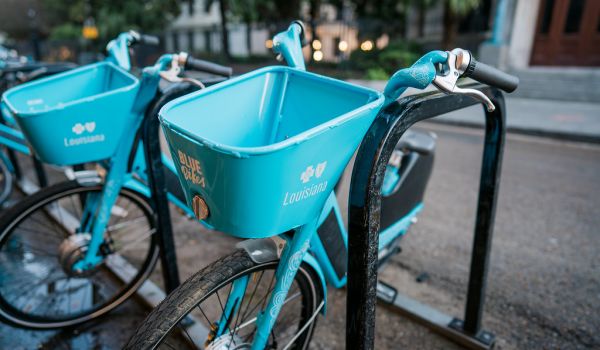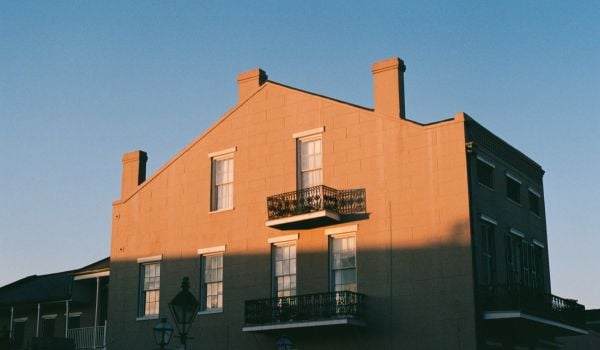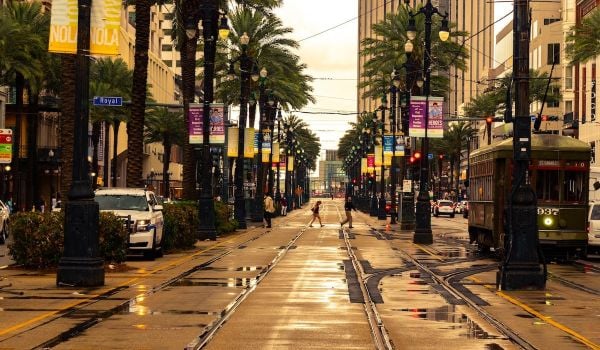The identity of New Orleans is as fluid, murky and powerful as the Mississippi River itself. This is a city of controlled chaos as ineluctable as any hurricane, a constantly shifting human landscape of celebration, disaster and resilience that occupies a unique place in the pantheon of world cities. It captures the imagination and holds on tight.
A new book, Unfathomable City: A New Orleans Atlas, tries to capture a part of the city’s identity by mapping its myriad histories in precise and inventive ways. Editors Rebecca Solnit and Rebecca Snedeker acknowledge the delightful impossibility of their task from the start:
New Orleans is all kinds of unfathomable, a city of amorphous boundaries, where land is forever turning into water, water devours land, and a thousand degrees of marshy, muddy, oozing in-between exist; where lines that elsewhere seem drawn are blurry; where whatever you say requires more elaboration; where most rules are full of exceptions the way most land here is full of water.
The city’s turbid complexity does not stop the book’s dozens of collaborators — writers, designer, artists, photographers, cartographers — from trying to plumb its depths. Unfathomable City contains 22 maps that trace New Orleans’ cultural, mercantile and natural patterns, from the banana trade to the rise of bounce music, from the civil rights struggle to the sugar industry. Oil wells, parade routes, swamps and cemeteries are all mapped. Accompanying essays, many of them lyrical and all packed with fascinating history and ephemera, attempt to make some sense of this glorious, churning mess of a city.
At the heart of every map is water: The thick, ropy line of the Mississippi, the vast expanse of Lake Pontchartrain, the ruler-straight canals, the pumping stations and wetlands. And the essayists continually grapple with the way that water has both enabled and confined the people of New Orleans.
Perhaps most intriguing is the link drawn between levees and prisons in an essay by Lydia Pelot-Hobbs, a writer and activist. Pelot-Hobbs tells of the intersection between the way Louisiana has tried to control the Mississippi and the way it has tried to control its people, especially New Orleaneans.
The Central City neighborhood of New Orleans, according to Unfathomable City, is “the most incarcerated neighborhood in the most incarcerated city in the most incarcerated state in the most incarcerated nation in the world.” The hub of that incarceration is upriver at the Louisiana State Penitentiary at Angola, a notoriously brutal and desolate prison on the site of a former plantation just a dozen miles from the Old River Control Structure, which diverts one-third of the river’s flow and was intended by engineers to dominate the Mississippi once and for all.
Pelot-Hobbs draws a parallel between the dysfunctional system of flood control and the equally dysfunctional prison system. For generations, she writes, the government built levees higher and higher in a vain hope of containing the Mississippi’s water and preventing catastrophic floods that regularly devastate the region. This “levees-only” approach proved a dismal failure at accounting for the river’s complications and sheer power, and yet its legacy remains to this day.
So too, she writes, the justice system has focused on containment and restriction, building more and more jail cells with little regard for the complex racial and class dynamics of the human society it ostensibly tries to protect and improve:
While it has been forcefully argued that the policies of levees-only and mass incarceration have made southern Louisiana more secure, what these policies have actually done is illuminate whose lives are deemed valuable and who has been rendered disposable time and time again.
In New Orleans, water is often used as a metaphor. But Unfathomable City illustrates that it is so much more. Water, in New Orleans, is a medium for expression, an engine of prosperity, a definition of identity, an existential condition and a way of life. It cannot and will never be contained.
Watermark is made possible with the support of the Surdna Foundation.

Sarah Goodyear has written about cities for a variety of publications, including CityLab, Grist and Streetsblog. She lives in Brooklyn.














